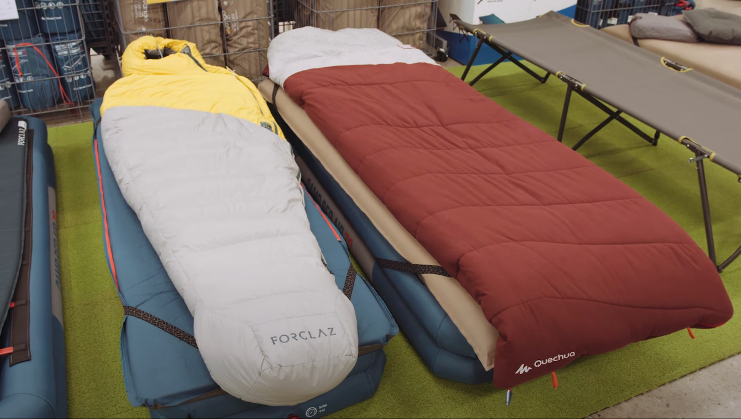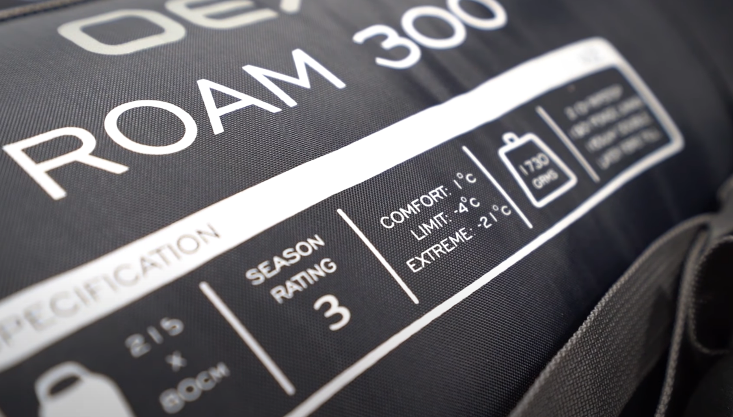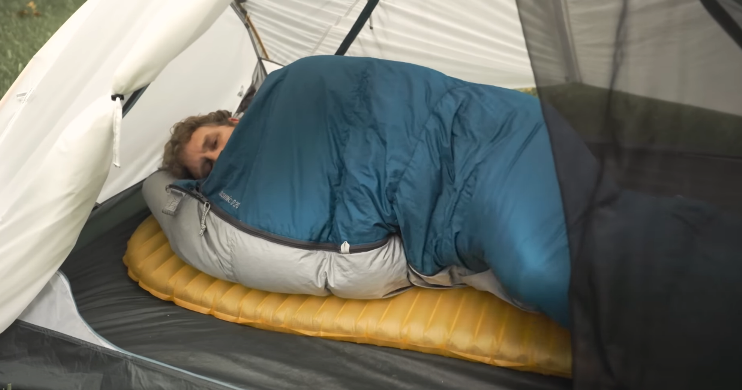A sleeping bag is an essential accessory for anyone who loves camping, hiking or any other outdoor activity. It keeps you warm and cozy when you’re outside and gives you a safe and comfortable place to sleep. However, there are so many different types of sleeping bags on the market that it can sometimes be difficult to find the right one for your needs. In this guide we will look at the different types of sleeping bags, examine the pros and cons of each type and give you advice on how to how to choose a sleeping bag for camping.
How to Choose a Sleeping Bag for Camping
Look for it
- There is no such thing as the best sleeping bag for all times. Manufacturers usually state one or more seasons for which the sleeping bag is suitable. Temperature recommendations are also provided so you can choose between a year-round sleeping bag, a summer sleeping bag or a winter sleeping bag.
- There are not only differences in insulation. The shape and cut also leave different options open. There are mummy sleeping bags which are warmer, but leave almost no leg room. Blanket sleeping bags leave more room and are easy to tie up, but are usually not as warm.
- Another important criterion is the dimensions, both unfolded and rolled up. A compression bag helps to store the sleeping bag in a way that saves space. This is especially important when you are walking, because all the luggage must be carried on your back.
How to choose a sleeping bag for camping? Whether you are staying with friends, in a hostel, in a tent or outdoors: you need a sleeping bag for many times. However, not every sleeping bag is suitable for every night as our Sleeping bag comparison has shown. Insulation, cut, pack size and much more play a role in finding the best sleeping bag.
This Is What Makes the Best Sleeping Bag Different
While objective comparisons are easy to make with some products, sleeping bag comparisons are more difficult to make. The reason is the almost endless variety of product features. It starts with the temperature range, goes through shape and material to cleaning and care.
To answer the question how to choose a sleeping bag for camping, you should first make a list that answers the following questions:
- What temperature can I expect? Does the sleeping bag need to keep me warm even when it’s below freezing or will I be camping when it’s freezing in the summer?
- Do I want to sleep outside or do I sleep in a hut, hostel or tent?
- Do I need a lot of freedom of movement?
- Do I want to be able to use the sleeping bag as a blanket?
- Do I tend to sweat and do I need a washable sleeping bag?
With the help of this questionnaire you will find out which Type of sleeping bag could be your choice.
Advantages and Disadvantages of a Sleeping Bag Compared to a Traditional Bed
Pros and cons of a sleeping bag
Pros
- Easy to assemble and take down
- Perfect for an overnight stay in nature or in a cabin
- Perfect thermal insulation thanks to the body cut
- Protection against water, insects and cold
Cons
- Freedom of movement is restricted
- Sometimes it can only be washed by hand
- A large pack size can be awkward when walking
There Are Different Types of Sleeping Bags
Perhaps the most obvious difference is the shape:
Mummy sleeping bag
The mummy sleeping bag got its name from the shape of the bodies that run close to each other on the legs. This is how the thermal insulation is the best score and its Mummy winter sleeping bag they can store body heat even at a temperature of -20 °.
However, the mummy sleeping bag also limits your freedom of movement, so you won’t be able to sleep in addition to the bed at home.
Sleeping bag-blanket
Sleeping bag-blanket with headboard. Thanks to the all-round zipper, it can also be used as a blanket or together with a second sleeping bag of the same cut. However, it pays Blanket sleeping bag this diversity with its thermal insulation. Because of the wide cut, it can store less heat.
Note: The egg-shaped sleeping bag represents a combination of the two shapes. The other shape in the middle supports a natural sleeping position without allowing too much warm air to escape from the shoulders.

How to choose a sleeping bag for camping? The shape is the most revealing feature of the Buy a sleeping bag, however, there are several other factors that you should definitely consider.
Lining and Thermal Insulation
Depending on the temperature range you can expect at night, you should choose different factors when buying a sleeping bag combined with each other. As explained above, on the one hand the cut plays a big role. On the other hand, the filler a big difference when it comes to climate properties and breathability.
Down sleeping bags are considered the top league and are therefore higher in price. They have good climatic properties and are particularly warm. It also has a small package size and light weight. So if you need a stable and reliable companion, you should use a down sleeping bag.
Synthetic fiber sleeping bags are slightly less breathable, weigh slightly more and have a larger pack size. But they are priced in the lower and middle price range. They are often chosen by young people, festival-goers and casual vacationers when they are faced with the question of how to choose a sleeping bag for camping.

Package Weight and Size
How to choose a sleeping bag for camping? Be sure to take into account the weight and size of the package. Especially if you are on foot and have to carry your luggage for a long time. The differences in weight can be up to 1kg, so it is worth checking the manufacturer’s information. Regarding the size of the package, we can recommend so-called compression bags. These sleeping bag storage bags are equipped with strong straps that fasten the sleeping bag together to the smallest size.
Cleaning and Care
Like any outdoor equipment, the best sleeping bag also needs to be cleaned and maintained regularly. To do this, you should follow the manufacturer’s information, which usually pronounces a washing recommendation. But regardless of the machine or the hand wash, the following recommendations should be taken into account:
- Ventilate the sleeping bag well! Leave the sleeping bag open for at least 30 minutes before packing it. This allows the moisture to escape from the inside and prevent fungus from developing.
- Pack the foot end first. This technique pushes the air out from the inside while packing.
